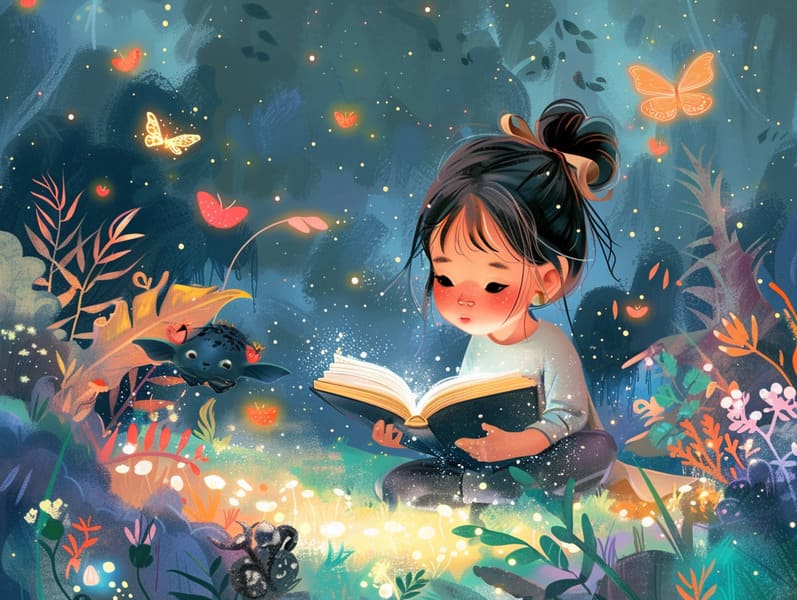Understanding the Legacy of Legendary Fairy Tales and the Unwavering Wonder.
Understanding the Legacy of Legendary Fairy Tales and the Unwavering Wonder.
Blog Article

Fairy tales for kids have timeless appeal. These stories have been told from one generation to the next far before they were ever published. They came from a variety of cultures, including Middle Eastern traditions. They were initially disseminated among mature audiences, often carrying themes and messages pertaining to the societal norms and beliefs of the time.
The Grimm brothers, Jacob and Wilhelm, were among the first to assemble many of these beloved fairy tales. Their anthology, "Grimm's Fairy Stories," included classics like "The Story of Cinderella," "Little Brother and Little Sister," and "The True Story of Snow White," which have since become essentials in the world of traditional fairy tales. Similarly, H. C. Andersen's charming narratives, such as "The Mermaid," and "The Little Duckling," have won hearts worldwide, solidifying their place in the pantheon of timeless fairy tales.
Despite their ancient origins, classic fairy tales remain as impactful as ever, especially as bedtime stories for kids. These enchanting tales are now available in numerous formats, including richly illustrated books, charming animations, and online storybooks.
Their ongoing significance can be credited to several whimsical characteristics:
Key Lessons: Old fairy tales often share important moral lessons. Tales like "The Tale of the Boy Who Cried Wolf" teach the importance of sincerity, while "The Race of the Tortoise and the Hare" demonstrate the benefits of steadfastness and unassuming nature. These stories offer kids clear distinctions between virtue and vice, helping to shape their moral compass in a soft yet impactful way.
Compassion and Insight: Classic fairy tales frequently portray personalities facing challenges and problems, stimulating young readers to comprehend with their struggles and back their triumphs. For instance, "Beauty and Her Beast" illustrates the virtue of valuing inner qualities to appreciate the true character of a soul, enhancing kindness and understanding.
Cultural Understanding: Many classic fairy tales are deeply embedded in the cultural contexts from which they were born. Learning from these tales can provide captivating looks into different customs, enhancing a sense of global respect and knowledge.
Imagination and Innovation: The extraordinary elements in traditional fairy tales—mythical entities—boost children’s visions. These narratives transport readers to fantasy realms, kindling creative dreams and a sense of wonder that stays a lifetime.
Ancient fairy tales are not only whimsical but also didactic. They provide delightful tools in cultivating various intellectual and emotional capacities in little ones. When timeless fairy tales are spoken, they promote verbal skills by presenting new word meanings and sophisticated sentence structures. This practice also boosts listening abilities and mindfulness, as kids focus on every detail, prepared to see what happens next.
Furthermore, discussing the themes and characters of ancient fairy tales can cultivate evaluative skills and intellectual skills. Kids learn to find patterns, forecast, and know cause and effect. These conversations also further little ones reveal their thoughts and feelings, enhancing their emotional intelligence.
In today’s digital age, the prevalence of free fairy tales online has made these tales more available than ever. Web-based platforms and apps share wide arrays of bedtime fairy tales that can be explored or heard anytime, anywhere. Fairy tales told out loud are particularly common, sharing an charming way for the young to take part in these entrancing tales. Read-aloud stories and voiced videos transport characters and settings to life, often joined by bewitching musical scores and harmonies that intensify the story adventure.
The timeless fascination of traditional fairy tales lies in their ability to shift to present days while retaining their underlying messages. Contemporary reimaginings of these stories often incorporate more representative figures and modern settings, making them relatable to today’s audience. However, the fundamental themes of valour, understanding, and impartiality remain unchanged, continuing to impact readers of all ages.
Fairy tales also offer a sense of solace and knowability. They present to a structured narrative with a recognizable beginning, middle, and end, often ending with the conclusion of conflicts and the triumph of honesty over deceit. This assuredness can be comforting for young ones, bringing a sense of dependability in an unpredictable world.
Ancient fairy tales continue to enthrall and teach new generations, maintaining their beauty and pertinence in modern society. As kids' bedtime tales, they distribute a perfect blend of allure and teaching, aiding moral values, empathy, and creativity. The proliferation of web-based fairy tales and the favor of fairy tales narrated confirm that these old stories remain available to new generations.
By safeguarding and spreading these fairy tales, we continue to glorify the rich tapestry of fantasy and cultural heritage. Whether you are accessing a gorgeously illustrated book, exploring a web collection, or listening via an read-aloud book, the loveliness of popular fairy tales is always within reach. These tales teach us of the endless spell of fairy tales and its ability to draw us together across generations and cultures.
If you are discovering a colorful picture book, seeing a electronic collection, or listening on an audiobook, the grandeur read more of old fairy tales is always within reach.
These tales illustrate of the consistent presence of narratives and its ability to bond us across epochs and places, casting a charm that captivates and teaches alike.